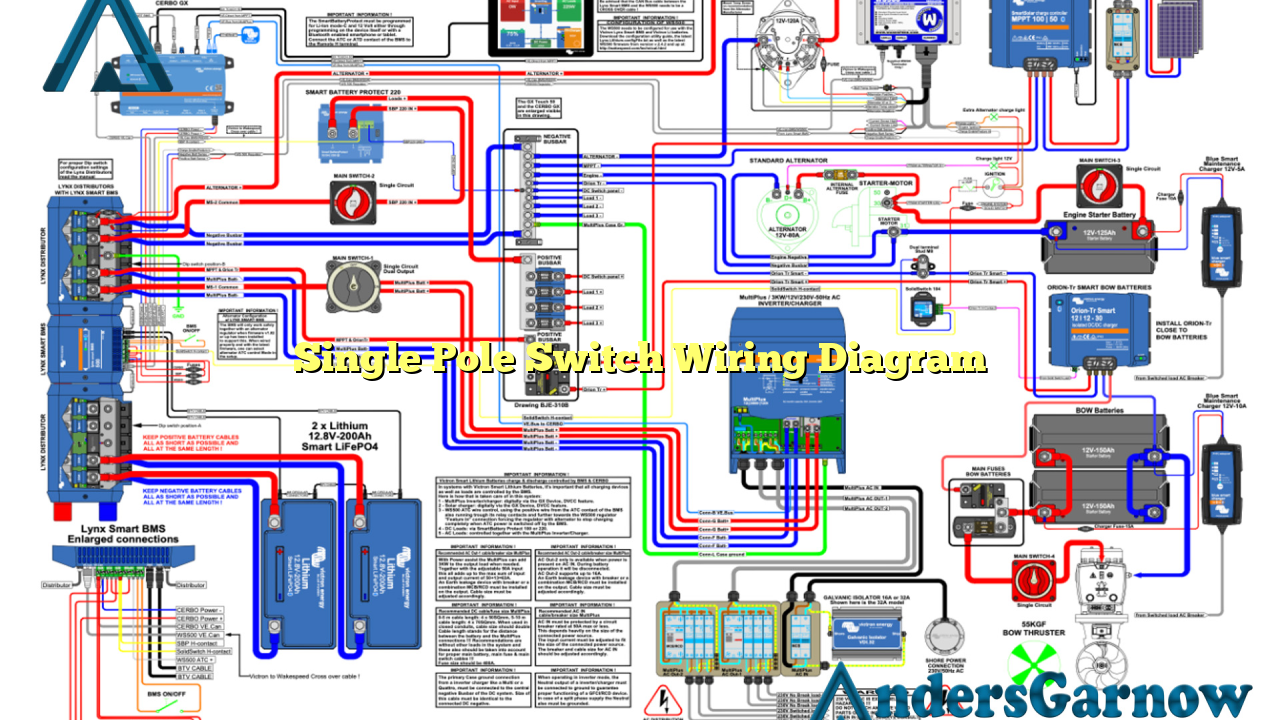Hello, dear readers! In this article, we will delve into the world of single pole switch wiring diagrams. Whether you are a beginner or an expert in electrical installations, understanding how to wire a single pole switch is an essential skill. So, let’s explore this topic in detail and discover the ins and outs of single pole switch wiring.
1. What is a Single Pole Switch?
A single pole switch is a basic electrical device used to control a light fixture or an electrical outlet from a single location. It is the most common type of switch found in homes and buildings as it allows users to easily turn the lights on or off with a simple flick.
One of the main advantages of a single pole switch is its simplicity. It consists of two brass screw terminals, a green grounding screw, and a toggle handle. The brass terminals are used to connect the hot (black) wire and the switched hot (red) wire, while the green screw is for grounding purposes.
2. Wiring a Single Pole Switch
Before diving into the wiring process, it’s crucial to ensure that the power is turned off for the circuit you are working on. Safety should always be the top priority when dealing with electrical systems.
To wire a single pole switch, follow these steps:
- Start by removing the cover plate of the switch and unscrewing the switch from the electrical box.
- Identify the hot wire, which is usually black, and connect it to one of the brass terminals on the switch using a wire connector or by wrapping it around the screw in a clockwise direction.
- Locate the switched hot wire, typically red, and connect it to the other brass terminal.
- Finally, attach the grounding wire to the green screw on the switch.
- Secure the switch back into the electrical box and replace the cover plate.
It’s important to note that the specific wiring may vary depending on the manufacturer and the age of your electrical system. Always refer to the wiring diagram provided by the switch manufacturer or consult a professional electrician if you are unsure.
3. Advantages of Single Pole Switches
Single pole switches offer several advantages:
- Simplicity: Single pole switches are straightforward to install and operate.
- Cost-effective: They are generally less expensive compared to other types of switches.
- Space-saving: Single pole switches are compact in size, making them ideal for areas with limited space.
- Compatibility: They can be used with a wide range of light fixtures and electrical outlets.
4. Disadvantages of Single Pole Switches
Although single pole switches have numerous benefits, they also have a few drawbacks:
- Limited control: Single pole switches can only control a single light fixture or outlet from one location. If you require multiple control points, you will need to use a different type of switch.
- No dimming capability: Single pole switches do not have the ability to dim lights. If dimming is desired, a different switch, such as a dimmer switch, should be used.
5. Alternative Wiring Options
If you need more control over your lighting or want to install multiple switches to control a single light fixture, you can consider alternative wiring options such as three-way switches or four-way switches.
Three-way switches allow you to control a light fixture from two different locations, while four-way switches provide control from three or more locations. These types of switches enable greater flexibility in lighting control but require more complex wiring configurations.
6. Single Pole Switch Wiring Diagram Table
| Wire Color | Function |
|---|---|
| Black | Hot (Line) |
| Red | Switched Hot (Load) |
| Green | Ground (Earth) |
7. Frequently Asked Questions
Q: Can I use a single pole switch to control a ceiling fan?
A: No, single pole switches are not suitable for controlling ceiling fans. Ceiling fans require dedicated fan controls, such as a fan speed switch or a remote control, to operate effectively.
Q: Can I use a single pole switch for a 240-volt circuit?
A: No, single pole switches are designed for 120-volt circuits. For 240-volt circuits, you will need a double pole switch.
Q: How do I troubleshoot a single pole switch that is not working?
A: First, check if the circuit breaker has tripped or if the fuse has blown. If the power supply is intact, ensure that the wiring connections are secure. If the switch still doesn’t work, it may be faulty and require replacement.
Conclusion
In conclusion, understanding how to wire a single pole switch is a fundamental skill for anyone involved in electrical installations. Single pole switches offer simplicity, cost-effectiveness, and compatibility, making them a popular choice for controlling lighting and outlets in homes and buildings. However, they do have limitations, such as limited control and no dimming capability. By considering alternative wiring options, such as three-way switches or four-way switches, you can expand your lighting control capabilities. Always prioritize safety and refer to the manufacturer’s instructions or consult a professional electrician when working with electrical systems.

